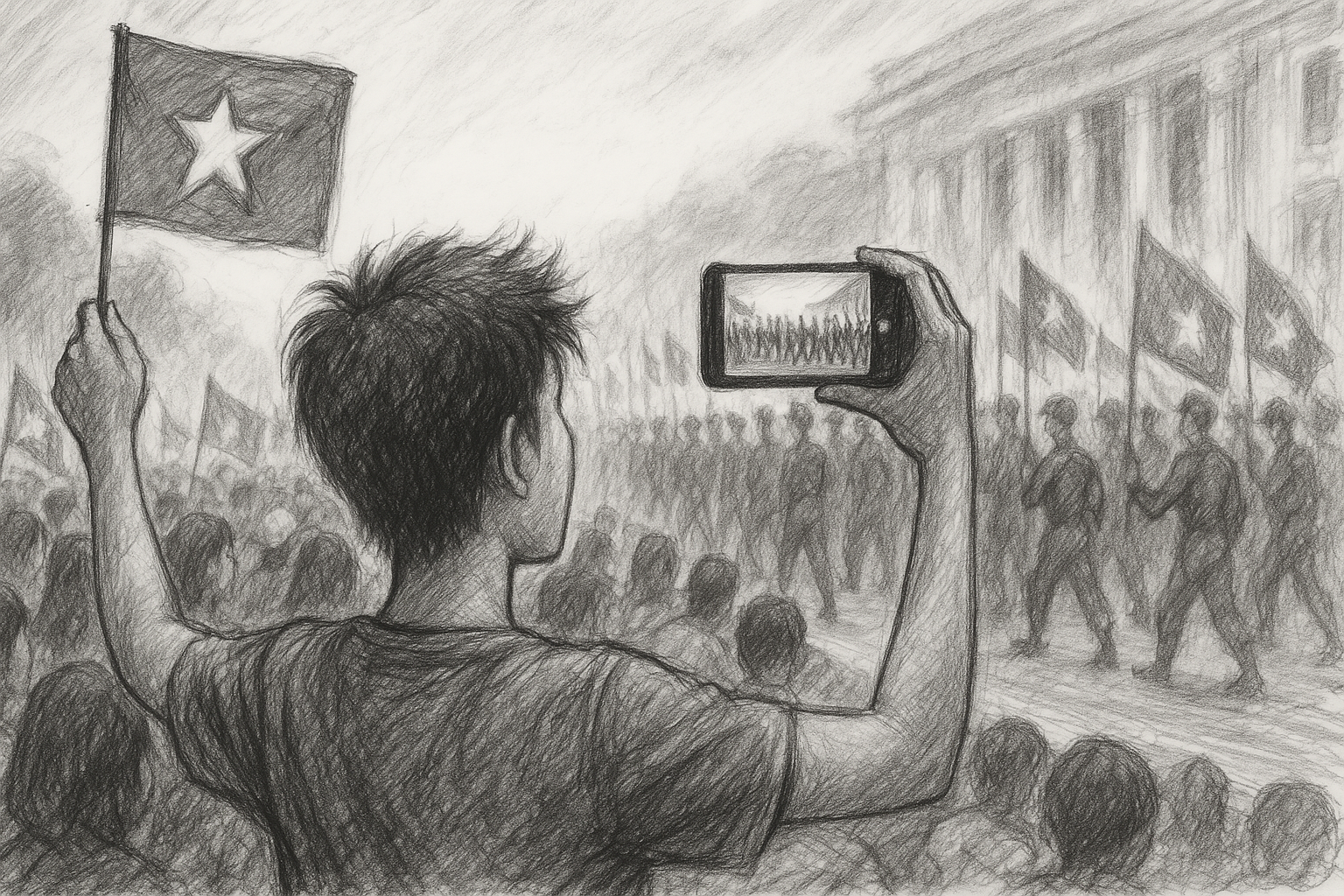Public display of pride: Vietnam's heroic past spiritedly remembered
Before the parade began, something else had already awakened a sense of national pride.
THE HANOI TIMES — Released in mid-April, Dia Dao (The Tunnel) quickly became one of Vietnam's most talked-about films. Crowds packed theaters. TikTok was filled with edits of battle scenes. University groups organized post-screening discussions. The movie didn't just entertain, it struck a chord.

Set during the war against America, The Tunnel follows a group of soldiers as they navigate narrow, stifling underground passageways. Viewers watched as they crawled through mud, dodged explosions, and fought in silence below the surface, right under the enemy's feet. "I've been to the Cu Chi tunnels, but this movie made me feel something the history books never could,” one student wrote online.
Some went further. A young man in fatigues arrived at a Hanoi movie theater dressed as a tunnel soldier. "It's not cosplay, it's appreciation. I come from a small town with its own tunnels. Now I want to go back and learn more."
What made The Tunnel different wasn't just its direction or effects. It was how young people embraced it, with attention, emotion, and ownership. They weren't told to remember. They chose to.
And just as that energy crested, Vietnam approached April 30.
The night before the 50th Reunification Day Parade in Ho Chi Minh City, the streets of downtown didn't sleep. People streamed into the city center from early evening. Families spread out mats on Le Loi Street. Office workers carried umbrellas like makeshift tents. Children curled up on the sidewalks. People sang, chatted, and waited.
Min Tran, a student from Binh Duong, arrived at 3:00 AM with friends. "It felt like a concert," she said. Others agreed. On social media, the parade was nicknamed the "national concert," a celebration of how real, how present the experience felt.
At sunrise, Nguyen Hue Boulevard was a sea of red flags and yellow stars. The parade began with formations of soldiers, veterans, youth volunteers, and students. But it wasn't just the marchers who caught attention, it was the crowd itself. They clapped, livestreamed, and shouted out thanks to older veterans. They showed up. And that matters.
In the crowd was Kim Oanh, an office worker clutching a small flag. "I'm proud to be Vietnamese," she said, standing next to her co-workers who had arrived before dawn.
Elsewhere, Le Thanh Son, a military officer from Binh Chanh District, had cycled into the city the day before just to feel the atmosphere. "I spent the night with everyone," he said. "We all remember those who gave their lives for this day."
Nearby, Vo Nhu Hao, a university student from Dong Nai, had taken the last metro into the city just before midnight. "I saw the rehearsals earlier this year," she said. "It was powerful. But today, being here in the real thing, with everyone around, it feels different."
The meaning of April 30 has always been political, historical, and deeply emotional. But this year it also became something else: popular.
For decades, national pride was expressed through formal ceremonies, carefully written slogans and speeches. It still is. But now it's also displayed through social media captions, spontaneous applause, and the decision to wait all night just to witness something together.
Even the veterans noticed. Ngo Trong Que, who came from Nghe An, sat quietly on the side of the road with a flag. Others in uniform posed for pictures with the young people and answered their questions.
I was standing next to one of them who was smiling when a group of teenagers shouted: "You look great, sir!" He turned to me and said: "We didn't get this kind of welcome before. It feels good."
My uncle marched in a parade decades ago. "No one noticed us," he told me. "We came home quietly." That memory stayed with me. Until now, I'd never thought it would change. But maybe it has.
Across generations, Vietnam is finding new ways to remember the past. The tunnel and the parade didn't replace old stories, they helped people feel them again through cinema, walking streets, real conversations between past and present.
Some will say that this is only superficial. That applauding at a parade or crying in a movie theater doesn't equal understanding. But they miss something crucial: feeling is the beginning of understanding. Without emotion, memory fades. Without engagement, history becomes homework.
This isn’t just about one parade or one film. It’s about a shift.
History is no longer something to be studied from a distance, it's on the sidewalk and on the screen. It's in the voice of a 20-year-old explaining the meaning of April 30 to her younger cousin. It's in the veteran who now hears applause instead of silence. It's in the decision to show up, not because someone told you to, but because you wanted to feel it for yourself.
Even the city itself has a story to tell. What was once a battlefield is now filled with lights, towers, and metro lines. From the heart of Ho Chi Minh City, echoes of the past can still be heard, but now they travel through speakers, camera lenses, and the voices of a younger generation ready to carry them forward.
Instead of asking whether young people still care about the past, perhaps we should start by asking whether we are ready to accept the way they choose to remember it, with curiosity, emotion, and on their own terms.











